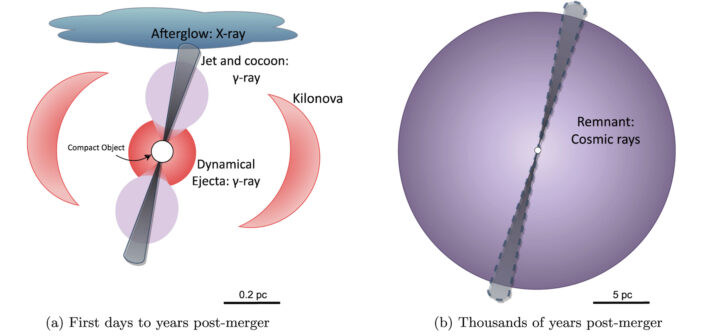The image above shows the radiation and particles generated by a kilonova, the explosion produced when the remnants of two massive stars collide. Kilonovae made headlines in 2017, when scientists observed gravitational waves and a kilonova from colliding neutron stars for the first time. Recently, a research team led by Haille Perkins (University of Illinois Urbana-Champaign) used information gleaned from the 2017 event to estimate the threat posed by a kilonova’s X-rays, gamma rays, and cosmic rays. Fortunately for us, a kilonova would have to be quite close for life on Earth to be endangered by its X-rays or gamma rays — within about 3 light-years for X-rays or 13 light-years for gamma rays. Even after the initial glow of the collision fades, though, there’s still danger: high-energy charged particles called cosmic rays pose a threat years after the dangerous radiation has passed, and a kilonova’s cosmic rays can be lethal out to 36 light-years away. Luckily, kilonovae are extremely rare, and the danger to life on Earth is minimal. As researchers observe more kilonovae and improve their models, we’ll be able to refine our understanding of how close is too close when it comes to kilonovae, the threat they pose to Earth, and the role they play in determining where in the universe life can form and flourish.
Citation
“Could a Kilonova Kill: A Threat Assessment,” Haille M. L. Perkins et al 2024 ApJ 961 170. doi:10.3847/1538-4357/ad12b7
